Medicine X | Symplur research challenge semi-finalists
On behalf of Medicine X and Symplur, I’m delighted to announce the semi-finalists for the Stanford Medicine X | Symplur social media analytics research challenge. These semi-finalists will receive access to Symplur Signals analytics to pursue their research questions and will submit a summary of their research findings for consideration in the final stage of the challenge.
How did social media contribute to the Medicine X conference in 2014 (#MedX)?
Paul Grant (@paulgrant)
“The greatest value of social media in a congress is delivered to the delegates at the event, rather than those who are following the conversation online but not attending in person.”
It is well known that congress hashtags reach a wide audience leading up to, during, and after an organized event. While this is valuable in itself, far greater value is found in the relationships that are strengthened in person and may have been only ‘virtual’ until the event. The resulting interactions and collaborations can bring meaningful and tangible disruption to programs for changing health care. Furthermore, those who engage with social media in a congress are able to capture their own interpretation of the event, leaving a lasting impression and retention of lessons learned.
Lauren Cook (@loranstefani)
Patients/caregivers engage more during the conference when their messages solicit responses from perceived authority figures (government/policy leaders, healthcare administrators, clinical researchers or physicians) rather than responses from other patients or caregivers.
How is social media being used to innovate medical education?
Damian Roland (@damian_roland)
There is a large and quantifiable flow of information between users of social media. Patterns develop from these interactions with networks arising as information transfer increases. The advent as social media as an educational tool is based on the assumption of the emergence of digital learning communities (DLC) from these interactions.
DLC offer a open digital space for information sharing, with flat role hierarchy, a strong group identity, high engagement, rapid flow of information, content curation, and knowledge translation (KT). The latter beneficial for patients as acceleration of KT is a cornerstone of modern healthcare.
To confirm this hypothesis it should be possible to identify the flow of information between the nodes of any given network, describe relations between members of the network and recognize emerging DLCs. The Free Open Access Meducation (FOAM) movement will be utilised and #FOAMed analysed as a methodology to determine whether its fits a model of a DLC.
Jonathan Hausmann (@hausmannMD)
Medical trainees are encouraged to consume—rather than create—online content, missing a powerful learning opportunity. Creating content requires the user to reflect on an experience, identify important themes, link new ideas with previously-learned material, and generate a message in their own words, employing cognitive skills that fosters effective learning. In contrast, learning that occurs by reading a sentence is likely negligible.
Effective learning also occurs through “practice testing,” a technique that involves self-testing (generating and answering your own questions) or answering other people’s questions, yet this method is almost absent in online medical education.
We hypothesize that encouraging learners to create and share educational micro-content in the form of a question and answer set will increase content-creation by learners, promote the use of questions by the #MedEd community, and improve satisfaction with online learning by medical trainees.
Christopher Ramnanan (@ChrisRamnanan)
Our goal is to determine, for medical education research sert sikis ve sex videoları bulunan turkce
sitesi. projects presented at the 2012, 2013 and 2014 Canadian Conferences in Medical Education,
- which Twitter keywords are associated with the most highly disseminated presentations on social media;
- for CCME attendees active on Twitter, determine whether individual social media metrics (ie. number of Twitter followers; activity level on Twitter) correlate with traditional metrics of research impact (ie. h index); and
- determine whether social media impact can predict eventual eventual publication and traditional publication impact indices (times cited, journal impact factor).
We hypothesize that there will be certain keywords (ex. subject hashtags) that will be correlated with strong social media metrics for presentations, and that at the individual level and at the article level, specific social media indices will predict traditional research impact.
Rashelle Hayes (DrRashelleHayes)
- What are medical schools doing to teach the newly updated obesity treatment guidelines? Who are the influences in medical education around obesity treatment training? What sites, programs, and resources are medical schools currently sending students to to learn more about obesity treatment?
- What are medical students and/or healthcare providers saying about obesity treatment? What are their perceived barriers to treating overweight and obese individuals?
- Will medical students and practicing physicians meet through twitterchats or use a hashtag (e.g. #mededobesity, #obesitytreatmenttraining) to discuss obesity treatment guidelines? What will they discuss? How engaging is the twitterchat? Hashtag? Can this be used as a supplemental learning tool/resource for training healthcare providers/medical students about obesity treatment guidelines? How feasible is it to implement this for medical school curriculum?
Tamara Moores (@TamTamMD)
Millennial educators believe that online blogs, podcasts, Twitter and the online community have revolutionized the future of medical education. An explosion of free and searchable online educational material, called FOAM (Free and Open Access Meducation), is thought to have increased the lateral engagement of medical professionals and brought thought leaders to the forefront of discussion forums, creating accessible education for everyone. To test these broad claims we will perform a randomized controlled trial that employs thought leaders to direct interest toward specific journal articles via dissemination on Twitter and blog posts.
How is social media transforming healthcare in 2015?
Christophe Giraud-Carrier (@ChristopheGC)
Internet technologies, especially social media, continue to facilitate a new paradigm, in which users actively produce and disseminate health information rather than act as passive recipients. According to the Pew Research Center, 65% of U.S. Internet users in 2014 felt that they were better informed about health and fitness than 5 years prior because of their Internet and cell phone use. In the new ecosystem, experiential knowledge about symptoms, side effects and remedies can easily be gleaned to augment and, in some cases, replace professional expertise. In September 2010, over 45% of people said they would seek a quick remedy for an everyday health issue or practical advice for coping with day-to-day health situations from other patients, friends and family. We wish to see the role that social media play in this context. In particular, we address the following research question:
What kind of responses do Twitter users receive when posting questions about their health?
Perry Gee (@gee_perry)
Our long-term research goal is to develop and promote an online diabetes community intervention that meets the support needs for the older adult with type 2 diabetes. Our preliminary data strongly suggest that adults age 65 and over are significantly underrepresented in the diabetes online community. Our objectives in this application are to identify the direct factors that promote social support in an online diabetes community, and based on that information, develop a new diabetes online community or enhance an existing diabetes online community that will promote adherence to self-management activities in older adults with type 2 diabetes. Our central hypothesis, based upon preliminary data and anecdotal published reports, is that a strategically designed and implemented online diabetes community will meet the social support needs for the older adult with type 2 diabetes and promote adherence to diabetes self-management activities.
Mandi Bishop (@MandiBPro)
Social media has become an outlet for many of those struggling with self harm, depression and suicide. Unfortunately Twitter’s poor signal-to-noise ratio often makes it difficult to connect meaningfully, and this may leave individuals with increased feelings of not belonging, isolation, and hopeless. Addressing Twitter’s engagement problem specifically as it relates to suicide prevention will improve the quality of educational and industry conversations taking place online, as well as provide insight into how clinicians may better assess suicidality in remote or telehealth settings.
Thesis Statement: There is a significant gap between the communities using the “official” hashtags talking about suicide and related mental health issues, and the people actually at risk of suicide.
Iris Thiele Isip Tan (@endocrine_witch)
Pregnancy can be difficult enough without the added burden of gestational diabetes mellitus (GDM). Few studies have examined how women with GDM handle the diagnosis. They are time-pressured to adjust dietary habits and lifestyle to maintain good glycemic control. A systematic review showed that while women with GDM are motivated to protect their baby, there are many challenges. Little is known about factors that hinder adherence to treatment.
Objectives:
- Categorize tweets by women with GDM according to constructs of the Health Belief Model (self-efficacy, cues to action, modifying variables; perception of susceptibility, severity, benefits and barriers)
- Define information needs of women with GDM using tweets
- Assess accuracy of tweets on management of GDM using the American Diabetes Association Standards of Medical Care in Diabetes
- Evaluate website links shared within tweets using the Health on the Net Foundation Code
- Describe how information is shared on Twitter
Richard Ashdown (@rashdown)
Twitter is a primary media of communication amongst teenagers. The hypothesis is that there is a correlation between tweets reflecting self-harm in the UK (specifically the cities of Liverpool and Oxford) and reported incidence of self harm admissions to hospitals. Is twitter an accurate predictor of mental health issues – specifically self harm – amongst the teenagers of the millennial generation?
Urmimala Sarkar (@urmimalasarkar)
Problem Statement: Reported misuse of opioids is a rising public health concern in the US, with prescriptions for opioid medications nearly doubling between 1994 and 2007.
Research Questions: To what extent are non-medical use of prescription opioids discussed in social media (SoMe) ?
Specifically:
- How do tweets vary by time and geography?
- To what extent are tweets disseminated through SoMe?
Hypothesis: Non-medical use of prescription opioids, including aberrant behaviors, will be discussed through SoMe. Distinct communities with specific substance use/seeking patterns will emerge.
These findings will have implications for better understanding real-time trends of prescription drug safety issues. As more people adopt SoMe tools, SoMe may play a tandem role in research with current drug safety surveillance systems that are limited by delays in reporting and under-reporting. Longer term, this may suggest targeted SoMe intervention strategies to reduce opioid use.
Luís Pinho-Costa (@L_PC)
Twitter is transforming communication in Family Medicine (FM) and becoming a source of real-time engagement data, as it can be employed in producing standardized metrics of online conversations.
Global Health and sustainable universal care are gaining unique attention, and Primary Care and FM are bound to play a crucial role in alleviating the world from the greatest disease burdens and inequalities, and fostering united action. Engaging therefore with the Global Health community is of high importance for FM. Our hypothesis is that Symplur Signals infodemiology metrics can be used to gauge the growing worldwide reach of FM-based conversations on different hashtags and trends therein.
We aim to identify the FM-related hashtags that had the greatest worldwide reach in the span of 6 months, deliver a methodology for measuring their impact, and explore their relation with Global Health-themed tweets.
Kristina Rabarison (@kristina_ra)
Implementation of the Affordable Care Act (ACA) presents an opportunity to promote health system integration (i.e., integration of primary care and public health). Health system integration is defined on a continuum from isolation to merger and focuses on mutual awareness, cooperation, collaboration, and partnership among primary care and public health stakeholders. For the purpose of this study, we hypothesize that ACA-related conversations on social media platforms, such as Twitter, foster mutual awareness among health system players through knowledge sharing and idea diffusion. Specifically, do primary care and public health stakeholders engage in bi-directional ACA-related Twitter conversations and do those conversations lead to the formation of geographically diverse, virtual communities that have a mutual interest in health system integration?
Saul Hymes (@IDDocHymes)
We hypothesize that by comparing the location and network dynamics of both pro- and anti-vaccine discussion on Twitter to published vaccination rates, tweet activity can be used as a surrogate marker for areas of low or high vaccination. We additionally hypothesize that current and past vaccine-preventable disease (VPD) outbreaks in low-vaccination areas will be associated temporally with high rates of preceding local anti-vaccine twitter activity. Tracking pro- and anti-vaccine tweets and tweet networks may be useful to predict areas that are more or less likely to see outbreaks of VPDs, thus allowing more appropriate and economical allocation of education and healthcare resources.





